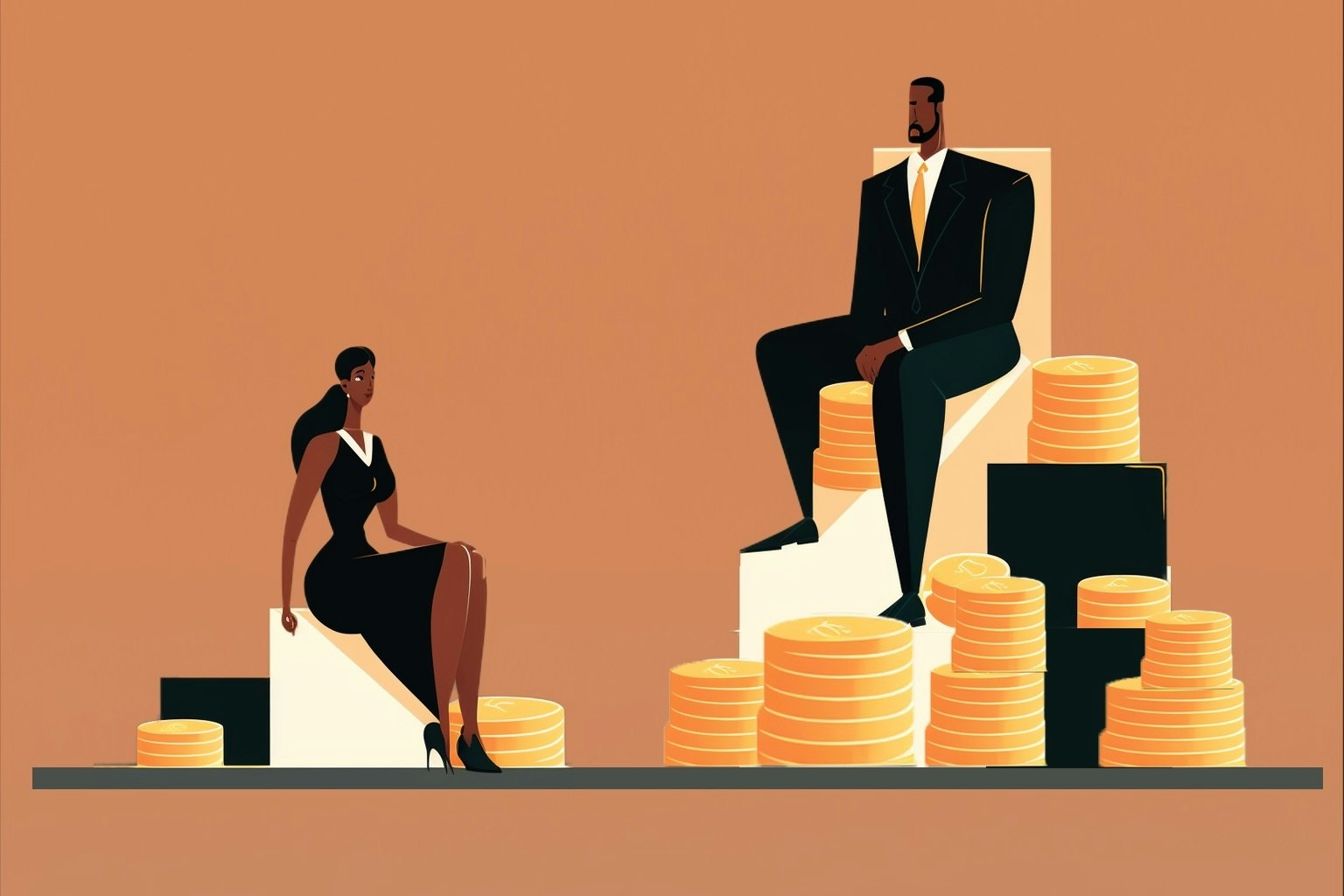The gender pay gap at European startups is more than double the broader pay gap across the EU.
According to data from salary benchmarking platform Ravio, European tech companies pay women roughly 77p for every £1 men earn. That’s significantly worse than the pay gap across all jobs and sectors in the EU, where women earn roughly 89p for every £1 earned by men.
So why does this pay gap exist — and what can be done to tackle it? Sifted dug into the data and spoke to a number of gender pay gap experts to find out.
Lack of women in leadership
One of the reasons the startup gender pay is so wide is the lack of women in the highest-paid roles. Around a third of manager, senior manager and director roles are held by women, and women make up just 13% of the C-suite at European tech companies.
This is partly driven by a recruitment problem at early-stage startups — where the gender pay gap is widest — according to Raymond Siems, cofounder and chief product and technology officer at Ravio.
“More men are given the opportunity to join early-stage companies and take more of the senior positions,” he tells Sifted. “This creates a vicious cycle where more men develop more early startup experience and become strong candidates for future roles.”
Early-stage startups’ focus on growth and staying afloat means that parity in employees' career progression is often not high on their priority list, says gender pay gap consultant Michelle Gyimah. “That's unlikely to change unless there's external pressure from investors to embed this from the start,” she tells Sifted.
The issue also extends to late-stage startups and, according to Ravio’s data, tech companies at Series B and beyond have a pay gap of 21%. Sifted found that two thirds of UK unicorns have a gender pay gap worse than the national average in an analysis last year.
The pay gap in similar roles
But the lack of women at the top doesn’t entirely explain the problem — there’s still a pay gap within most seniority levels that Ravio measures.
The biggest gap at senior levels is seen between managers, where women are paid 19% less than men. At senior manager and director level the pay gap is 6% and 10%, respectively. The only exception is at C-suite, where women are paid 7% more than men. Ravio also found that women are paid 4% less than men for roles with the same job titles in the same location — known as the adjusted pay gap.
Men and women have similar rates of promotion each year (around 7%) and pay increases (around 14%), according to Ravio’s data, so this is mostly down to the gender pay gap between new hires, says Siems.
New female hires are paid significantly less than their male counterparts — earning 82p for every £1 men earn.
The “ask gap” — the difference in salary expectations between different groups, which often leaves women and minorities being paid less — does contribute to this, but it’s still possible to create fair hiring processes, says Siems.
“It takes deliberate action and careful management because salary negotiations are often carried out by many different people working at startups and scaleups,” he tells Sifted. “This heightens the risk of gender bias influencing salary offers.”
But while there is research suggesting women ask for less money than men, other studies have shown that women ask for the same amount — they’re just not given it.
“The foundational issue lies in systemic behaviours that allow pay secrecy and bias to flourish when making pay decisions for men and women,” says Giymah. “It's not simply a case of women not asking, but of inherent bias within existing pay structures and philosophies.”
What can be done about it?
Transparency is the word of the day. According to data from Figures, the only companies that have eliminated the adjusted pay gap between men and women openly share what everyone’s paid across their workforce.
There have been growing calls in the startup world to provide more pay transparency on job adverts — which also brought down the adjusted pay gap — although Figures found that only 28% of startups actually did this.
But lawmakers are beginning to act, and a new EU directive coming into effect in 2024 will make it mandatory for companies to provide salary ranges in job adverts. It will also make it easier for women employees who feel like they’ve been paid less than their male colleagues to sue employers.
Technology is also helping to close the gap. In years gone by startups could blame their gender pay gap on a lack of knowledge about competitors' salary data. But with the rise of salary benchmarking platforms like Ravio and Figures, that’s no longer the case.
“Gone are the days when employers could convincingly assert that complying with laws like this is a legitimate hardship for them with the tools available today,” says Zev Eigen, founder and chief data scientist at workplace equity platform Syndio.
Companies are also starting to reassess their approach to closing their gender pay gap, says Gyimah. She’s beginning to see startups focus less on just reducing their pay gap figure and increasingly on other things, like equity, career progression, parental leave and mental health support.
“This means the gender pay gap figure might close at a slower pace, but is more sustainable and meaningful for employees,” she tells Sifted.


